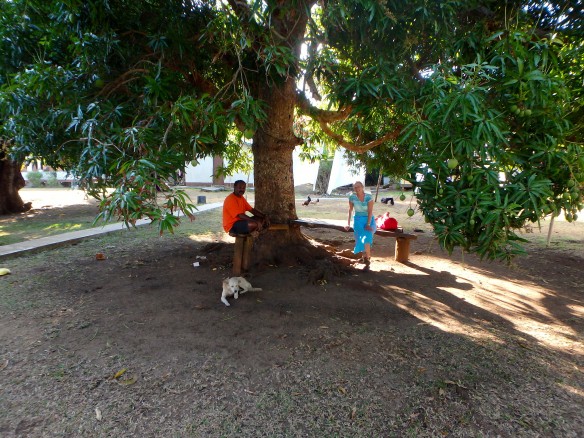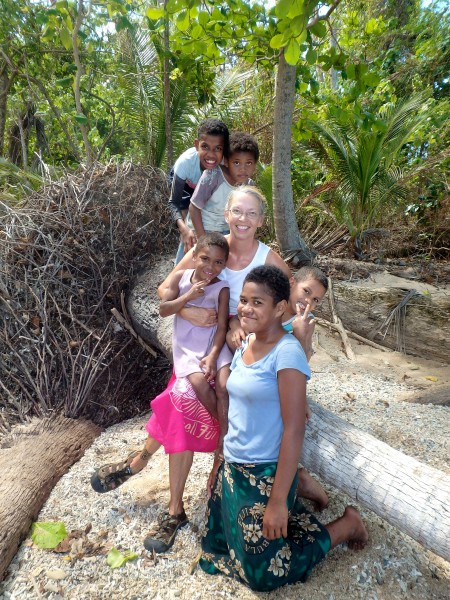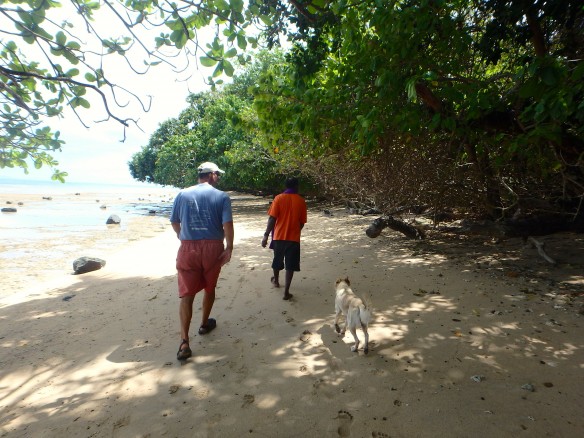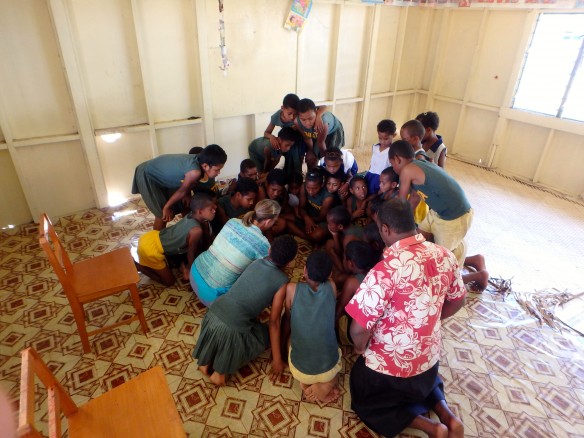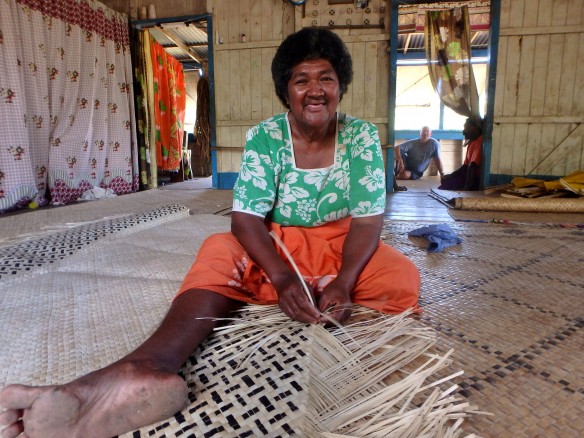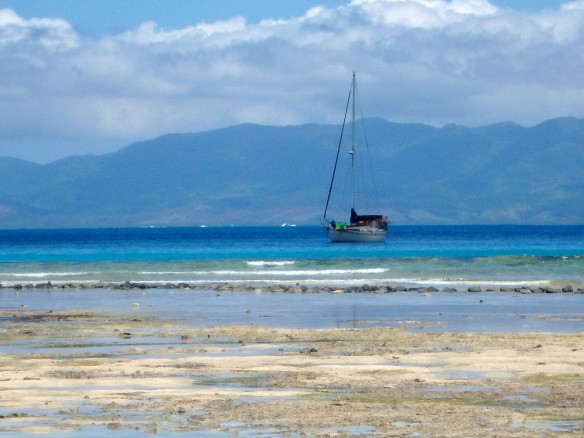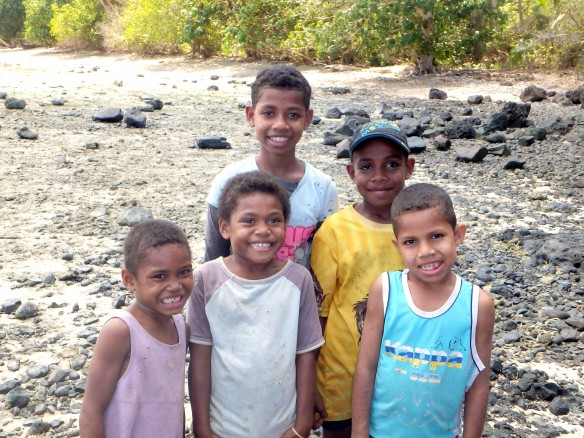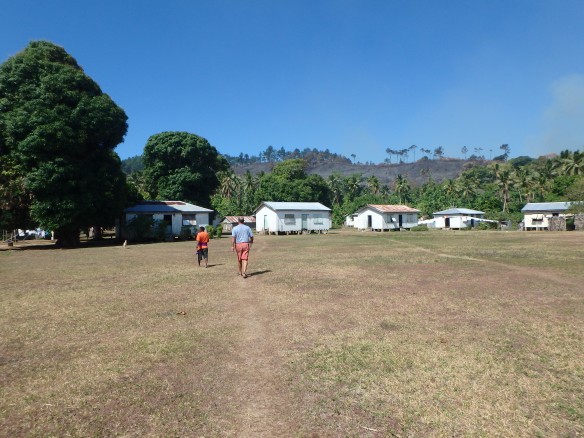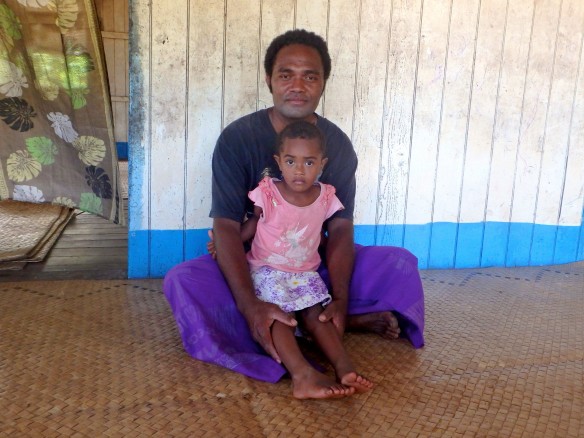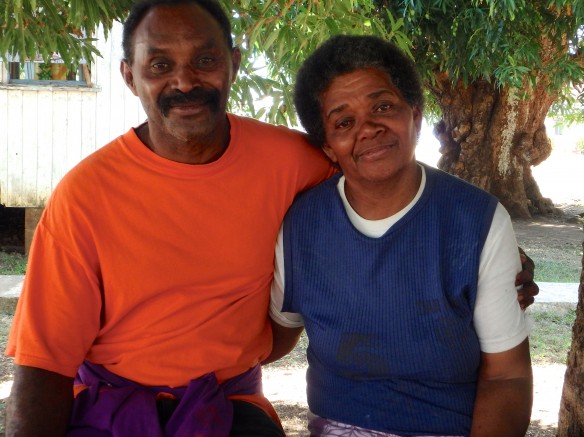We had no expectations for today other than a nice hike. What a surprise!
We started out the morning (on Makogai) with a trip in to the Fiji Fisheries Department station here to do sevusevu. Then the leader of the small station (Kameli) gave us a tour of the tanks that house the giant clams that they raise. There were only a couple of really giant ones in a tank called “brood stock”. Most of the other tanks had small ones destined for planting elsewhere once they are a few years old. A surprise find was the sea turtles they are raising. They have a couple dozen baby turtles and half a dozen two year olds. These latter are about 18 inches across and will soon be released. Fingers crossed.
Next, Kameli gave us a tour of the leper colony. Or rather a tour of the ruins. There was a colony here in the late 1800’s through the early/mid 1900’s. It was one of only two in the South Pacific that we are aware of. Here and Hawaii. This colony had areas designated for specific groups ranging across the South Pacific – Fijians, Cook Islanders, Samoans, Tongans… each group with their own area. And these are truly ruins because once the colony was decommissioned people came and dismantled all the usable materials. All that really remain are the concrete parts of the structures and the cemetery. An interesting tour nonetheless.
Then our “archeological day” started. We took a trail that left the fisheries station and headed south, down the west side of the island. It’s not heavily travelled as there is not a large population here – only two villages – but it’s been likely used by island inhabitants as long as people have lived here. It followed the coast. Sometimes up a couple hundred feet with views across to Ovalau and the mainland and sometimes along the water. It was somewhere between “jungle” and “rainforest”. Very beautiful though.
My first find of the day was while we were walking. I strayed a bit from the path and looking down saw a strange looking rock. I picked it up and saw that this four inch by six inch rock had three perfect holes “drilled” into it about one to two inches deep. Huh? Then I remembered reading that the Fijians used to spin sticks on rocks to create the heat to burn coconut husk and other very flammable material to start a fire. This rock is the perfect size to tuck into a pouch and I’m thinking it was someone’s personal fire starting rock from many, many years ago. Cool!
Ultimately we got clear to the southern tip of the island. A walk of an hour or so, so I’m guessing we went around three miles. Did a little beachcombing – Ann found an almost intact nautilus shell. It’s the holy grail of shell hunting around here. I cut a couple coconuts (yes, I brought my trusty machete) that we drank and then ate. Then we started back with the intent to shell hunt some more on a beach we saw a little way back.
Once at the beach we turned left just to go the short distance to the end of the beach with the intention to then track down the entire beach which was to the right. We got to the end however and I noticed what looked like a shipwreck. OK, I’m all in. It’s low tide and everything was exposed. Ann just sighed a bit and headed down the beach looking for shells while I zeroed in on the “shipwreck”. Well, it wasn’t. When I looked more closely the mechanical stuff I found was actually an old truck or two and the other stuff came from – I didn’t know where! Looking more closely I saw the answer. This was the result of a landslide that exposed layers in the cliff that had been buried for some years and the sea was now eroding those layers away and stuff was falling out. Double cool!
I took some pictures – the truck looks like an army truck. It had one tire still intact of the hard rubber/big lugs kind of look. There was a rusty engine and some other mechanical stuff I couldn’t quite identify. Then I saw a spoon (like what you eat with) sticking out of a rock. The end that you hold was literally stuck about an inch in the rock. Hmm, this had been here a while! I chipped and chipped using another rock and broke it loose. It has some writing I can’t quite read yet, but will work on it when we’re back in Savusavu tomorrow. It looks to be made of maybe silver plate on brass or bronze. There’s no rust even though it’s been under water at high tide for a while.
Then I saw something that caught my attention because it was not the rusty-red color of all the machinery. It was green. Hmmm. Taking a closer look I found…a cannon! Not a really old pirate kind of cannon, but an artillery piece nonetheless. It’s made of solid brass, about three feet long. The bore is about 2 inch and next to it was the breach (not sure what you call it) complete with very rusty but still identifiable firing pin. Both pieces were just laying on the rocks -underwater in all but low tide. I’m thinking they both fairly recently eroded out of the landslide and dropped to the rocks where I found them (one might say “rescued them”). What I didn’t find was the “other two or three feet” of this piece that is the firing chamber. I’m thinking this is the barrel and there’s yet a firing chamber out there somewhere, although it’s likely made of steel not brass and rusting away.
Even though the cannon weighs something like 70 pounds or so I was able to carry it back in my backpack and it now resides on Charisma so we can do some sleuthing at our leisure on what this is and where it came from. I’m thinking it may have been part of a coastal battery, but it also may just be a signaling cannon since it’s relatively smallish by “cannon” standards. Maybe we’ll put it on the bow of Charisma when all is said and done!
So there’s our day. Turtles, lepers, seashells and cannons (and a long-assed walk with said cannon on my back). All in a day’s work.



